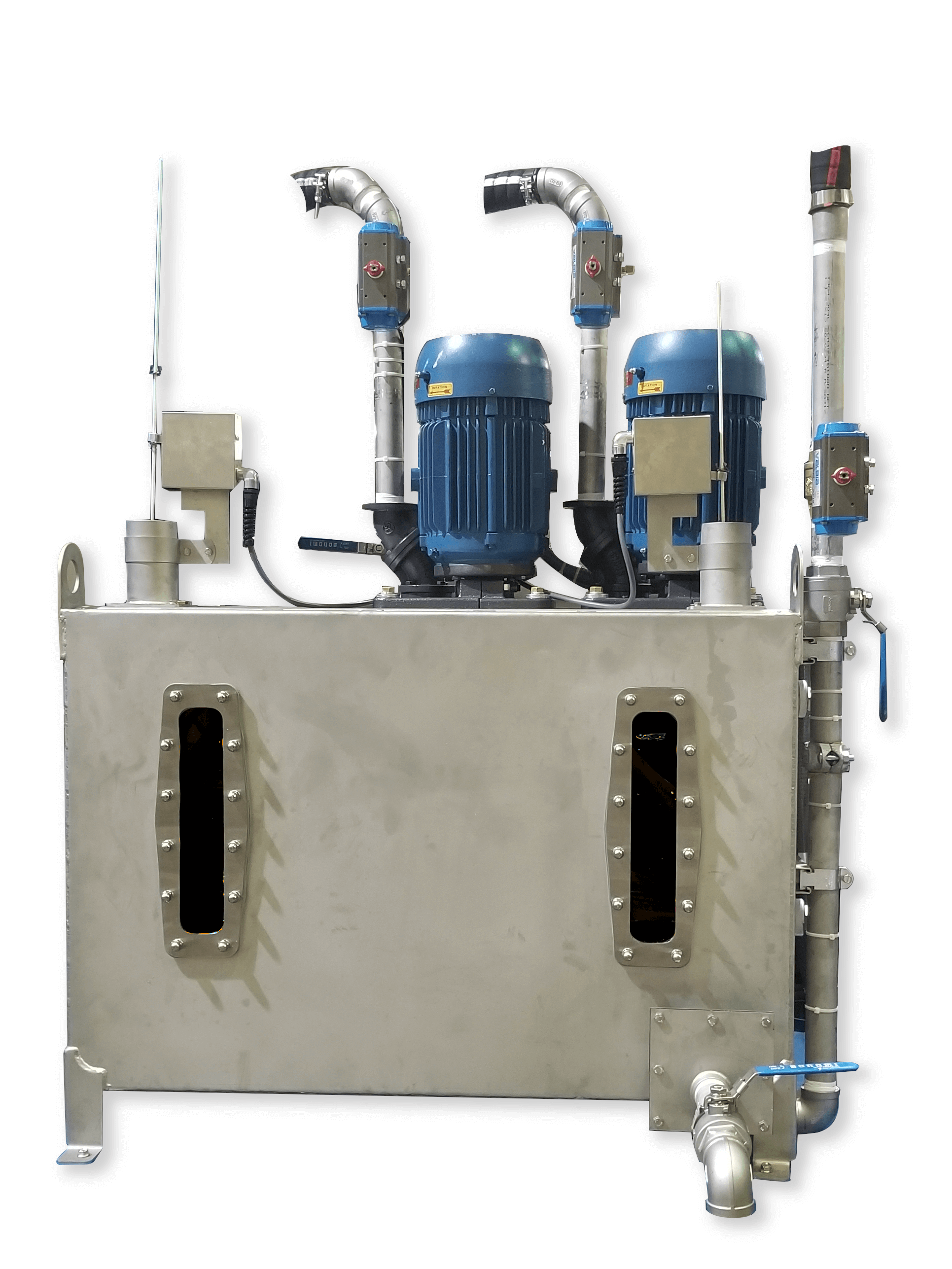
In the formula, you program
total gallons of water you want to flow and then program the fresh quantity desired.
The tank volume can be found in the article
PulseFlow tank water volume?The systems flows PulseFlow® water from the reuse side of the tank at first and then from fresh side. The valve triggers at the desired quantity less overshoot…which may be a lot. So, look at your fresh water GPP and throttle back the quantity of fresh water appropriately to get the desired value...like .35 Gallons per pound for standard linen.
The press (or extractor) pumps over the wedge wire screen at the PFT and fills the reuse side of the tank. If the reuse tank is low then the fresh water tank is used to make up the deficit. Low level on the PFT should be set higher than the GEMS style safety switches.
There are GEMS style safety switches
(09RL001) in the tanks. These are safety switches. The GEMS switches stop the pump from running to protect the pump. But, after initial filling, the water should never be that low since we control the flow based to the float switches. There is also a normal float style hi/low level switch on each tank.
There is not a valve to make up water in the reuse side of the tank. Technically, it can be almost empty but it does need water over the safety level switch at the very bottom of the tank. If there is no reuse water then the system uses fresh water only for PulseFLow®. The float style low level switch in the reuse side makes an input that turns on the fresh valve and off the reuse valve. Both pumps run on the same inverter and at the same time. Flow is controlled by the valves (reuse or fresh) and the PulseFlow® Mag Meter on the last rinse module.
Both pumps (reuse side and fresh side) are wired to 1 inverter and they run at the same time. Both a single tank and split tank work the same as far as the controller is concerned.
If you have a PFT with a single tank arrangement (not split) we fill the tank on low level and turn off the makeup water when high level is made. You can also program a formula for minimum fresh water.
The Mentor always shows "gallons of fresh water" as if there is a split tank, but the single tank does not have the option. So, this may be a little confusing. If you program fresh water gallons and have a single tank, any programming of fresh water quantity has no effect.
The inverter for the pumps has an input on terminal S1 that enables running if both tanks are above safety level and the pump is enabled by the controller. So, if the level is too low the pumps stop and no PulseFlow® water is delivered.

